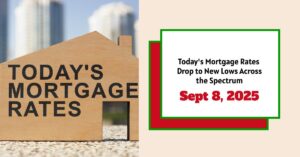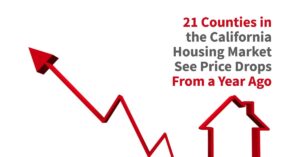Imagine a world where the value of homes in just a few cities adds up to more money than many small countries possess. Well, that world is ours, and it’s a reality right now in the United States. In fact, nine metro areas across the U.S. now boast housing markets each worth more than $1 trillion, collectively holding a significant portion of the nation's total housing wealth. This incredible concentration of wealth highlights not just the soaring costs of homes in these desirable locations but also the shifting dynamics of the entire American housing market.
According to a new Zillow® analysis, the housing market in the United States has reached an astonishing record high of $55.1 trillion, a monumental jump of $20 trillion since early 2020. While the overall growth has slowed a bit in the past year, gaining a still impressive $862 billion, these nine “trillion-dollar clubs” are at the heart of understanding where real estate money truly sits.
The Grand Overview: A Shifting Housing Landscape
For many of us, our home is the biggest investment we'll ever make. So, when home values go up or down, it directly affects our financial well-being and, by extension, the broader economy. What's truly interesting to see is how the map of housing wealth is redrawing itself. Places that were booming during the pandemic, often called “boomtowns” in the Sun Belt, are now cooling off. Meanwhile, new areas, especially in the Northeast and Midwest, are seeing a resurgence in housing value.
Consider this: since early 2020, states like California ($3.4 trillion), Florida ($1.6 trillion), New York ($1.5 trillion), and Texas ($1.2 trillion) saw the biggest total gains in housing value. But when we look at the last year (July 2024–June 2025), things changed. Florida's housing market actually lost $109 billion, and California's dropped by $106 billion. Texas also saw a decrease of $32 billion. It's a clear signal that the housing market isn't a one-size-fits-all story; different regions are experiencing very different trends.
So, where did the gains go? Look to the Northeast. New York added a massive $216 billion in value over the last year, grabbing a quarter of the national growth. Its neighbor, New Jersey, wasn't far behind with $101 billion in gains, followed by Illinois ($89 billion) and Pennsylvania ($73 billion). This shift suggests that the factors driving growth are changing, perhaps moving away from pure affordability and more towards established economic hubs.
The $1 Trillion Club: America's Richest Housing Markets Revealed
It’s truly remarkable to think that several individual metro areas hold housing wealth comparable to or even exceeding the entire gross domestic product of some nations. These aren't just big cities; they are economic powerhouses, attracting businesses, talent, and, consequently, significant housing investment.
Here are the nine metro areas that have broken into the exclusive $1 trillion housing wealth club:
- New York, NY: $4.6 trillion
- Los Angeles, CA: $3.9 trillion
- San Francisco, CA: $1.9 trillion
- Boston, MA: $1.3 trillion
- Washington, D.C.: $1.3 trillion
- Miami, FL: $1.2 trillion
- Chicago, IL: $1.2 trillion
- Seattle, WA: $1.1 trillion
- San Diego, CA: $1 trillion
Together, these nine metro areas represent almost one-third (31.9%) of all U.S. housing wealth. That’s a staggering concentration of value in relatively few places.
Let's dive a little deeper into each of these titans of real estate, understanding their recent performance and what makes them such valuable markets.
New York, NY: The Unstoppable Giant
- Total Market Value: $4,624 billion (or $4.6 trillion)
- Growth (July 2024–June 2025): $260 billion
New York isn't just in the club; it leads the club by a very wide margin. With a market value exceeding $4.6 trillion, it's roughly 20% wealthier in terms of housing than the second-place city, Los Angeles. More impressively, while many other areas saw declines, New York gained an astounding $260 billion in housing value in the last year alone. This surge highlights its enduring appeal as a global financial and cultural center. Despite high costs, demand remains incredibly strong, perhaps bolstered by a return to office trends or simply its unmatched economic gravitational pull.
Los Angeles, CA: The West Coast Behemoth
- Total Market Value: $3,864 billion (or $3.9 trillion)
- Growth (July 2024–June 2025): -$15 billion
Los Angeles stands as the second-largest housing market in the U.S. Its vast metro area and diverse economy, spanning entertainment, technology, and trade, contribute to its immense real estate value. However, unlike New York, Los Angeles experienced a slight dip of $15 billion in the past year. This isn't a massive drop, but it does signal a cooling off after years of significant gains, likely due to affordability challenges and high interest rates affecting buyer demand in an already expensive market.
San Francisco, CA: Tech Capital's Housing Power
- Total Market Value: $1,850 billion (or $1.9 trillion)
- Growth (July 2024–June 2025): -$52 billion
San Francisco, the heart of the tech world, has long been synonymous with sky-high home prices. Its nearly $1.9 trillion housing market reflects years of explosive growth driven by innovation and high-paying jobs. Yet, it recorded a notable decline of $52 billion in the last year. This could be due to a combination of factors, including the impact of remote work on office demand, some tech industry layoffs, and its already exorbitant cost of living pushing some residents to more affordable areas.
Boston, MA: Historic Charm, Modern Wealth
- Total Market Value: $1,322 billion (or $1.3 trillion)
- Growth (July 2024–June 2025): -$3 billion
Boston, a hub for education, healthcare, and biotech, holds a housing market valued at over $1.3 trillion. Its rich history and strong job market have always made it a desirable place to live. While it saw a minimal decline of $3 billion in the past year, it’s relatively stable compared to some West Coast counterparts. Boston's market appears to be benefiting from the general shift towards the Northeast, even if still facing its own affordability hurdles.
Washington, D.C.: The Nation's Capital
- Total Market Value: $1,296 billion (or $1.3 trillion)
- Growth (July 2024–June 2025): $24 billion$
Our nation's capital, with its stable government-related jobs and a growing tech sector, boasts a housing market just shy of $1.3 trillion. Unlike many of the other trillion-dollar cities, D.C. actually saw a respectable gain of $24 billion over the last year. This growth points to continued demand and a relatively resilient economy that isn't as prone to the boom-and-bust cycles seen in some more speculative markets.
Miami, FL: Sunshine and Shifting Sands
- Total Market Value: $1,233 billion (or $1.2 trillion)
- Growth (July 2024–June 2025): -$25 billion
Miami experienced a massive boom during the pandemic, attracting new residents and businesses. Its housing market soared to over $1.2 trillion. However, the latest data shows a decline of $25 billion. This aligns with the broader trend of Florida's market cooling, possibly due to a combination of factors including rising insurance costs, increased cost of living, and an equilibrium being reached after its rapid expansion.
Chicago, IL: The Midwestern Powerhouse
- Total Market Value: $1,219 billion (or $1.2 trillion)
- Growth (July 2024–June 2025): $62 billion
Often overlooked in the housing market narrative, Chicago surprises many by not only being a $1.2 trillion market but also by experiencing a healthy gain of $62 billion in the last year. This strong performance, along with other Midwestern and Northeastern cities, suggests a renewed interest in more established and perhaps comparatively more affordable major metropolitan areas, especially as remote work flexibility plays a role.
Seattle, WA: Another Tech Hub's Test
- Total Market Value: $1,113 billion (or $1.1 trillion)
- Growth (July 2024–June 2025): $13 billion
Seattle, home to tech giants like Amazon and Microsoft, commands a housing market exceeding $1.1 trillion. While it saw a modest gain of $13 billion over the past year, it's a far cry from the massive increases it experienced previously. Like its West Coast neighbors, Seattle faces affordability challenges and a reassessment of housing needs in a post-pandemic world.
San Diego, CA: The Southern California Jewel
- Total Market Value: $1,031 billion (or $1 trillion)
- Growth (July 2024–June 2025): -$22 billion
Rounding out the list is San Diego, just over the $1 trillion mark. Its beautiful coastal setting, strong military presence, and growing biotech industry have fueled its housing values for years. However, it also saw a decline of $22 billion in the last year, reflecting similar pressures to Los Angeles and San Francisco, including high prices and changing economic tides.
The Role of New Construction: Building Wealth and Affordability
It’s easy to focus on just existing home values, but new construction plays a massive role in shaping the overall housing market and building wealth. Since early 2020, new construction added an astounding $2.5 trillion in housing value to the U.S. total. That’s roughly 12.5% of the entire national gain.
Think about it: every new home built creates new wealth. It provides places for families to live, jobs for construction workers, and stimulates local economies. States like Utah (23%), Texas (22%), Idaho (22%), and Florida (20%) saw a significant chunk of their housing market gains come directly from new construction. These were the states that saw huge demand during the pandemic, and building new homes helped them absorb some of that demand.
The takeaway here for affordability is crucial. States that have been most active in building new homes, especially in the Sun Belt like Texas and Florida, are now seeing some improvements in affordability. It’s a basic supply-and-demand concept: more homes mean more options, which can help ease price increases. If we truly want to tackle the affordability crisis, building more homes across the board is a non-negotiable step.
Why the Shift? My Thoughts on What's Happening
From my perspective, watching these market shifts unfold, a few key things stand out.
First, the pandemic-driven scramble for space and perceived affordability led to an explosion in values in certain Sun Belt and Mountain West regions. People were working remotely, chasing lower taxes, and bigger backyards. Now, that initial boom is settling. The “affordability edge” of places like Florida and Texas has started to erode, not just because prices went up so much, but also due to other increasing costs like home insurance and property taxes.
Second, remote work isn’t a one-way street. While it opened up opportunities for some to move, many companies are now encouraging or even requiring a return to the office. This naturally favors established economic hubs like New York, Chicago, and Washington D.C., which have dense job markets and robust infrastructure. The renewed vigor in these areas makes a lot of sense when you consider this dynamic.
Third, the cost of borrowing money – interest rates – has a huge impact. When rates are high, fewer people can afford to buy, which can slow down price growth, especially in already expensive markets. This likely contributed to the slight declines seen in some of the trillion-dollar cities like Los Angeles and San Francisco, where prices were already at their peak.
Finally, the long-term appeal of stability and diverse economies seems to be shining through. Cities like New York and Chicago, with their deep-rooted industries beyond just tech, can weather economic fluctuations a bit better. Their housing markets might not always see the wildest swings up, but they often demonstrate a foundational resilience that pays off over time, making them attractive for long-term real estate investment.
What This Means for Homeowners and Buyers
If you're a homeowner in one of these trillion-dollar markets, especially one that saw a recent gain like New York or Chicago, you've likely seen your equity continue to grow. This is fantastic for your personal wealth. However, it also means that property taxes might be increasing, and the cost of living continues to be a factor.
For aspiring buyers, especially first-time buyers, these high-value markets remain incredibly challenging. Even with small dips in some areas, the entry barrier is substantial. This is where the emphasis on new construction becomes so vital. The more new homes built, the more pressure that puts on prices, which could eventually lead to more attainable housing options.
It's also important to remember that national trends don't tell the whole story. As we’ve seen, a state like Florida can lose significant value overall, but specific cities within it might still be strong, and vice-versa. Always look at the local data, not just the big picture.
Looking Ahead: The Future of Housing Wealth
The fact that nine metro areas hold such immense housing wealth is a testament to their economic pulling power. However, the recent data suggests a shift away from their total dominance in terms of growth. Excluding New York's incredible surge, the other eight $1 trillion markets combined lost $18 billion in housing value in the past year. This strongly suggests that growth is coming from other, often smaller, markets, where affordability might be relatively better, and remote work continues to play a role in redistribution.
This diffusion of housing wealth could be a positive sign in the long run. If more areas become attractive places to live and work, it could help alleviate some of the pressure on the most expensive cities and contribute to a more balanced national housing market. However, the underlying issue of housing supply, especially affordable housing, remains a critical challenge that needs consistent focus from policymakers and developers alike.
The American housing market is a dynamic and ever-evolving giant. While the headlines often focus on national averages, the true story is in the nuances of specific markets. These nine trillion-dollar metro areas are not just places where people live; they are monumental generators of wealth, reflecting decades of economic development, population growth, and investment. Keeping an eye on their trends gives us a powerful lens through which to understand the health and direction of the entire U.S. economy.
Invest in Real Estate in the Top U.S. Markets
Discover high-quality, ready-to-rent properties designed to deliver consistent returns.
Contact Norada today to expand your real estate portfolio with confidence.
Contact our investment counselors (No Obligation):
(800) 611-3060
Also Read:
- 4 States Dominate as the Riskiest Housing Markets in 2025
- Housing Market Predictions: Home Prices to Drop by 0.9% in 2025
- Housing Market Predictions 2025 by Norada Real Estate
- Housing Market Predictions 2025 by Warren Buffett's Berkshire Hathaway
- Will the Housing Market Crash in 2025: What Experts Predict?
- Housing Market Predictions 2026: Will it Crash or Boom?
- Housing Market Predictions for the Next 4 Years: 2025 to 2029
- Real Estate Forecast: Will Home Prices Bottom Out in 2025?
- Real Estate Forecast Next 5 Years: Top 5 Predictions for Future
- Will Real Estate Rebound in 2025: Top Predictions by Experts
- Real Estate Forecast Next 10 Years: Will Prices Skyrocket?










